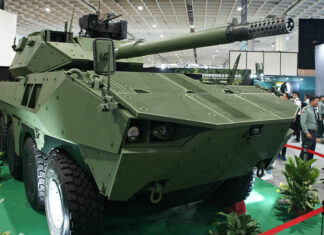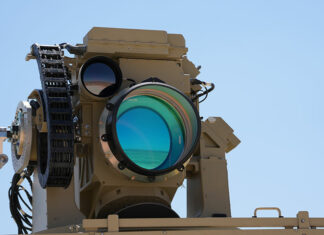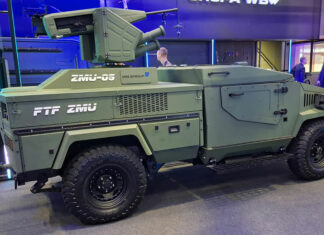Due to their cost and operating and design complexities, GPS/AJ receivers will not be deployed everywhere, but only in specific applications. To protect those systems which are not immune to jamming or interference, high power non space-based GPS transmitters called pseudo-satellites, or pseudolites could satisfy the demanding needs for anti-jam GPS navigation aids. The Pseudolite transmitter is conceptually simple, consisting of a GPS Anti-Jam reference receiver, integrated with an Inertial Measurement Unit (IMU) for position reporting, a GPS RF signal generator, an atomic frequency standard and supporting equipment such as power amplifier, power supply and datalink receiver. Rockwell Collins already demonstrated the feasibility of Pseudolites under a DARPA program. During tests, an airborne Pseudolite was deployed on US Army Hunter UAVs, emplaced as a secondary payload on the Hunter’s boom pods. In addition to its navigation support, Pseudolite can also provide ad-hoc datalink communications, supporting smart munitions with retargeting information, flexible fusing and other advanced features. Pseudolites can provide significant anti-jam GPS flexibility when deployed over a localized or wide area, without any change to existing hardware.
From Ukraine to Taiwan: The Global Race to Dominate the New Defense Tech Frontier
As traditional defense primes face mounting competition from agile “neoprimes” such as Anduril, Palantir and Helsing, the balance of innovation is shifting toward software-defined warfare and scalable, dual-use technologies, while global industry consolidation—marked by Boeing’s integration of Spirit AeroSystems and other strategic mergers—signals an intensified race to secure control over the defense technology value chain. Our Defense-Tech weekly report highlights these trends.
Europe’s “Drone Wall”
Tamir Eshel - 0
In early October 2025, a coordinated wave of unmanned aerial system (UAS) incursions—widely attributed to Russia—targeted critical infrastructure across at least ten European nations. The unprecedented campaign exposed the fragility of Europe’s air defenses...
Weekly Defense Update & Global Security Assessment
Tamir Eshel - 0
Executive Summary
The past week (September 18-25, 2025) represents an inflection point where strategic defense concepts have transitioned from doctrine to tangible reality. An analysis of global events reveals four primary, interconnected trends shaping an...
U.S. Air and Space Forces Push Next-Gen Programs at the AS&C 2025 Conference and...
Tamir Eshel - 0
At the 2025 Air, Space & Cyber Conference, U.S. Air Force and Space Force leaders unveiled major updates on next-generation fighters, bombers, unmanned systems, and space initiatives, highlighting both rapid innovation and critical readiness challenges as the services race to outpace global competitors. A short version is available here, with a more detailed version for subscribers.
TADTE 2025: Reflecting Taiwan’s Strategic Themes
Tamir Eshel - 0
The Taipei Aerospace & Defense Technology Exhibition (TADTE) 2025 crystallized around four dominant strategic themes that collectively illustrate Taiwan's comprehensive approach to defense modernization amid escalating regional tensions. Based on a detailed report by Pleronix (available upon request). Includes a Podcast discussion on TADTE 2025's highlighting Taiwan's four strategic themes beyond the post's coverage.
Iron Beam 450 Completes Testing, Soon to Join With Operational Air Defense Units
Tamir Eshel - 0
Israel’s Iron Beam 450 high-power laser system has completed final testing, marking a major leap in air defense. Developed by Rafael, it offers precise, cost-effective interception of rockets, UAVs, and mortars, and is set for IDF deployment by 2025.
WB Group Unveils Future Task Force Concept at MSPO
WB Group unveiled its Future Task Force (FTF) at MSPO, a new warfighting concept integrating manned, unmanned, and autonomous systems. Combining hybrid-electric vehicles, loitering munitions, and AI-enabled command tools, the FTF is designed to sustain firepower and autonomy while reducing battalion size and logistical footprint.

















